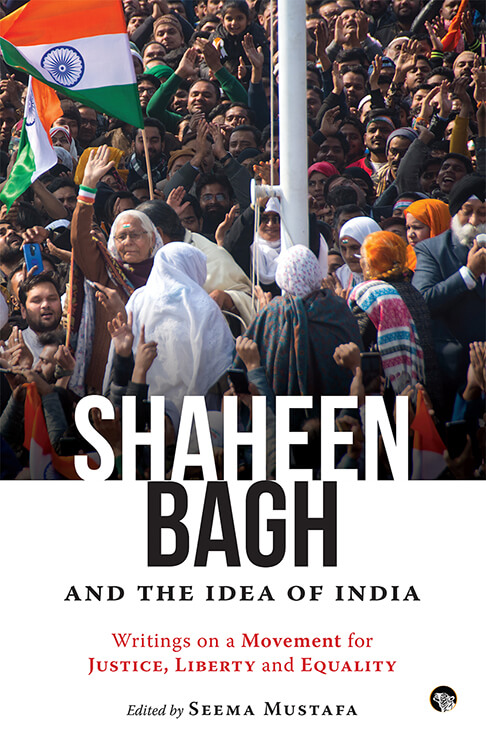Book: Shaheen Bagh and the Idea of India: Writings on a Movement for Justice, Liberty and Equality
Author: Edited by Seema Mustafa,
Publisher: Speaking Tiger
Price: Rs 450
“Dissent is contagious” writes the researcher, Anirban Bhattacharya, in his essay for this volume, dwelling on the biggest fear that seems to be the underlying reason for the slew of cases being brought by the Narendra Modi government against known faces associated with a protest that had caught the imagination of the nation.
As Shaheen Bagh became a pilgrimage of sorts for those invested in the Constitution and the Idea of India, it dispelled myths about Muslims and ‘Muslim areas’, further upending the Hindu versus Muslim binary that is the mainstay of the right wing. Not only was it a safe space to go to, the Shaheen Bagh gathering refused to be provoked into retaliation to invectives and bullets, providing daily examples of ‘Gandhigiri’. This, according to Bhattacharya, “was not a model that the ruling Bharatiya Janata Party could permit to stand unchallenged... The Shaheen Baghs and protests against the Citizenship (Amendment) Act (CAA) and National Register of Citizens (NRC) may not have been as much of an electoral threat for the BJP. But a politics that allows Muslims to articulate themselves in a vocabulary that is not just unapologetic about their identity but is also based on a rights discourse is definitely a threat.’’
The fear that had silenced many over the past few years had lifted and people appeared to draw strength from the frail, burqa-clad grandmothers who challenged peacefully the writ of the State by asserting their right to citizenship at a time when the community had been relegated to a class below those of others. Shaheen Bagh drew new faces into the battle for equality and secularism, creating the ground for ism-free coalitions driven mainly by millennials and members of Generation Z from all communities.
An attempt to chronicle the resistance movement that spawned similar protests across India has been made in this collection of essays edited by the journalist, Seema Mustafa. Besides detailing its genesis with the police action in Jamia Millia Islamia university, the traction through the turn of the year to Republic Day before losing steam as media attention got diverted by the Delhi elections and, finally, winding up with the announcement of the lockdown, the book seeks to analyse what Shaheen Bagh represented.

Shaheen Bagh and the Idea of India: Writings on a Movement for Justice, Liberty and Equality edited by Seema Mustafa, Speaking Tiger, Rs 450 Amazon
By all accounts, it was a defining moment that Independent India has not seen before. The political scientist, Zoya Hasan, and the writer, Nayantara Sahgal, liken it to the freedom struggle; only this was essentially a Muslim women’s movement with no visible leader. For many, this was a first, making the women “unlikely revolutionaries” in their burqas. Several essays in the book point out that these women were not asserting their rights as a persecuted minority but as citizens who have a right to equality and dignity. “This is why their movement was, and remains, a threat to a political party which has never accepted the principles of equality, secularism and solidarity that are fundamental to our Constitution,’’ argues Nandita Haksar.
In a call for introspection, the Delhi University professor, Apoorvanand — he is among those who have been questioned by the police for supporting the protests — dwells on the counter-polarization that evoked “hatred and disgust’’ in another quarter and the failure of the secular political class that forced the “dadis” to take to the streets.
And the child rights activist, Enakshi Ganguly, makes a strong pitch for children to express themselves, seeking to address the concerns raised about toddlers and young kids at the protest site after the death of a baby at Shaheen Bagh that provided detractors with another rationale to vilify the ‘civil disobedience movement’.










